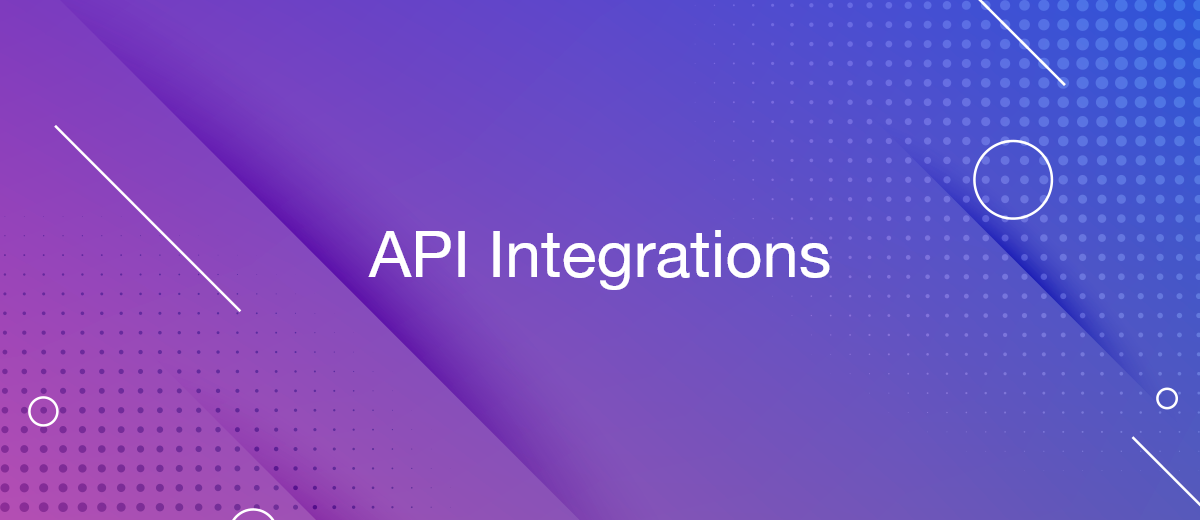API Integrations: The Unsung Heroes of Digital Progress
Have you ever wondered what happens when you order a cab on your favorite ride-sharing app? Once you tap the order ride button, a whole chain of events kicks off. A GPS location service checks your location, a push notification service sends an alert to the closest driver, and a mapping service directs the driver to your location. After the ride, a payment processor deducts the appropriate amount from your card. This process involves multiple disparate apps and services, yet they seamlessly work together to ensure you get a ride with the tap of a button on your screen. How does all this happen? The magic behind all this is a simple technology known as API integrations—the glue that binds our favorite apps and services together.
API integrations allow different apps to communicate and share data, creating seamless integrations that power our digital experiences. Without APIs, your ride-sharing app couldn't pinpoint your location or let you leave driver reviews, your streaming service wouldn't know your preferences, and your social media feeds would be silent. So, in this article, we’ll dive deep into the world of API integrations and shed light on their pivotal role in the digital revolution.
Understanding APIs: The Digital Connectors
Application Programming Interfaces, better known as APIs, are the digital equivalent of interpreters. They enable different software systems to talk to each other, ensuring that data and commands are understood across the digital language barrier. In simpler terms, APIs are the essential bridge that allows various applications to collaborate and share information.
For example, when you request a ride on your favorite app, you’re using an API that communicates your location and destination to the driver's app. When you like a post on social media, APIs ensure that your approval is instantly registered in your friend's feed.
For APIs to work their magic, they need a common language and a shared rulebook. This is where standardization and protocols come into play. Just like human languages have grammatical rules and dictionaries, APIs rely on established standards and protocols (such as REST and SOAP) to ensure seamless communication.
Benefits of API Integrations

API integrations are indispensable in today’s highly digital world. Some of the advantages of API-driven ecosystems include:
Streamlined Data Flow
API integrations streamline data flow by enabling the seamless transfer and synchronization of information between various software applications, systems, and services. This improved data flow is critical for businesses and organizations looking to make more informed decisions, enhance operational efficiency, and better serve their customers. APIs act as bridges between different data sources, ensuring that data is consistent, up-to-date, and readily available across the organization.
One key way API integrations streamline data flow is by facilitating real-time data updates. For instance, in the context of e-commerce, when an online store integrates with a payment gateway via an API, transaction data is instantly transferred and recorded, allowing for immediate order processing. This minimizes delays and errors that could occur with manual data entry, resulting in faster and more accurate order fulfillment.
API integrations also reduce data duplication and data entry errors, as information only needs to be entered once and can then be transferred across various systems. This not only saves time but also maintains data consistency and accuracy, leading to better decision-making and a more efficient real-time data flow.
Enhanced Productivity
API integrations are crucial in enhancing productivity by streamlining processes, automating tasks, and improving overall efficiency within businesses and organizations. One of the primary ways API integrations boost productivity is by connecting disparate systems and software, enabling them to work together seamlessly. This means that employees can access data and functionality from various applications without the need for manual data entry or time-consuming context switching.
For example, in a CRM system, integrating with an email marketing API allows for automated lead nurturing, reducing the time spent on repetitive email campaigns and increasing productivity.
API integrations also facilitate the automation of repetitive and mundane tasks. By linking different software tools and enabling them to communicate, organizations can optimize their workflows. For example, some SEO tools offer APIs that can be integrated with your CMS to automatically update meta tags or analyze keyword density. This automation is not only time-saving but also important for backlinks, as a well-optimized site is more likely to be linked by other reputable websites. By leveraging such APIs, you're not just streamlining your operations; you're also creating a more link-worthy digital asset.
Improved User Experience
By enabling different software systems to communicate and share data seamlessly, APIs can streamline and enrich user interactions. One notable way API integrations do this is by offering access to a broader set of features and functionalities.
- Automate the work of an online store or landing
- Empower through integration
- Don't spend money on programmers and integrators
- Save time by automating routine tasks
For example, when a mobile app integrates with social media APIs, users can easily share content, connect with friends, and log in using their existing credentials, eliminating the need to create new accounts or input redundant information. This simplifies the user journey and makes the app more streamlined as a whole.
Accelerated Innovation
API integrations also catalyze innovation by revolutionizing how organizations and developers create and deliver new products, services, and solutions. By providing a standardized way to access the functionalities and data of existing systems, APIs open up a world of possibilities for innovation.
One way this happens is through the rapid development of new features and applications. Instead of building everything from scratch, developers can leverage APIs to integrate pre-existing tools, services, and resources into their projects.
Let’s say you want to build an AI chatbot. Instead of spending six or seven-figure sums on expensive GPUs, you can just use the OpenAI API and integrate it with your own interface and dataset. As you can see, using API integration not only saves time but also allows for the creation of more sophisticated and feature-rich applications in a shorter time frame, driving innovation at a faster pace.
Additionally, APIs promote collaboration and ecosystem growth, further fueling innovation. When organizations make their APIs available to external developers, it fosters a vibrant developer community that can come up with creative uses for the API, leading to novel applications and integrations. Companies like Google, Amazon, and Facebook have harnessed this approach to build vast ecosystems of third-party developers and partners, spurring a continuous innovation cycle.
Driving Business Efficiency
API integrations drive business efficiency by helping companies streamline operations, improve productivity, and reduce costs. One way they do this is by automating tasks and data flow. By linking different software systems and allowing them to communicate seamlessly, APIs eliminate the need for manual data entry and repetitive processes.
For example, an e-commerce business can integrate its website with shipping APIs, automating order fulfillment, tracking, and shipping label generation. It can also harness the API of a React PDF viewer to automatically generate reports, or even integrate it with Slack’s API to automatically send reminders to colleagues, as well as important documents.
Additionally, API integrations promote data consistency and accuracy. When systems are connected through APIs, data is synchronized in real-time, ensuring that all parts of the organization have access to up-to-date information. This reduces data discrepancies and the need for data reconciliation, improving decision-making and overall business efficiency.
The Future of API Integrations
The future of API integrations holds immense promise as technology advances and businesses and industries become increasingly interconnected. One of the key trends in the future of API integrations is the rise of microservices architecture. This approach breaks down software applications into smaller, more modular components that can be easily integrated using APIs.
Microservices offer greater flexibility, scalability, and resilience, enabling businesses to adapt to changing demands more effectively. As a result, we can expect to see a proliferation of microservices-based integrations that foster agility and innovation.
Machine learning and artificial intelligence will also play a significant role in the future of API integrations. APIs that offer machine learning capabilities will allow businesses to extract more value from their data, enabling predictive analytics, personalized recommendations, and automation of complex decision-making processes. These AI-powered integrations will help businesses make smarter, data-driven decisions and provide more intelligent and personalized user experiences.
Additionally, security and compliance will be paramount in the future of API integrations. As data privacy regulations become more stringent, businesses will need to prioritize secure data transfer and storage through APIs. We can expect to see a growing emphasis on end-to-end encryption and robust authentication mechanisms within API integrations.
Moreover, with the proliferation of the Internet of Things (IoT), API integrations will expand to encompass a wide array of connected devices and sensors, presenting new opportunities and challenges in terms of data security and interoperability.
Wrapping Up
API integrations have become the cornerstone of enhanced user experiences, productivity, and innovation. By enabling seamless communication between disparate systems and services, APIs empower organizations to provide customers with user-friendly, feature-rich applications, all while optimizing internal operations, automating repetitive tasks, and reducing costs. They also foster a culture of innovation by connecting businesses with a vast ecosystem of external developers and resources, ultimately accelerating the pace of technological advancement.
Do you want to achieve your goals in business, career and life faster and better? Do it with ApiX-Drive – a tool that will remove a significant part of the routine from workflows and free up additional time to achieve your goals. Test the capabilities of Apix-Drive for free – see for yourself the effectiveness of the tool.


